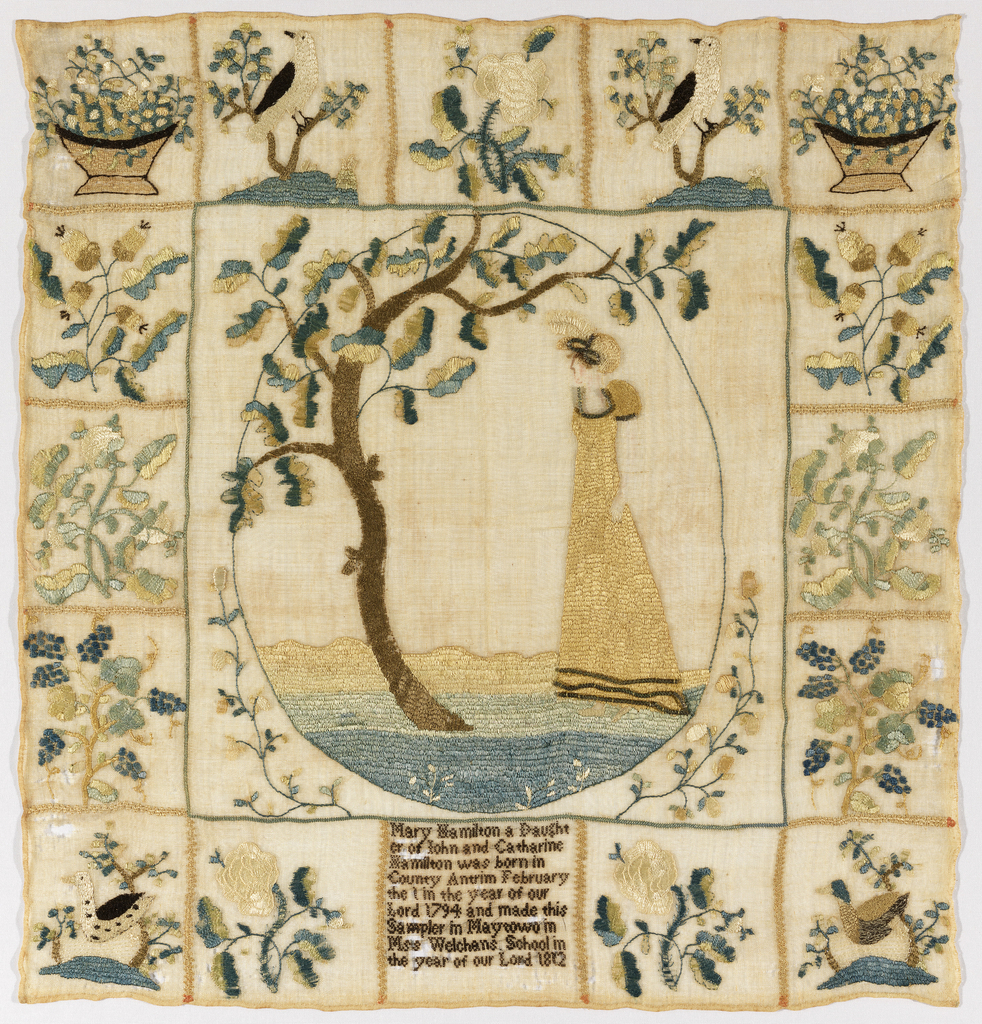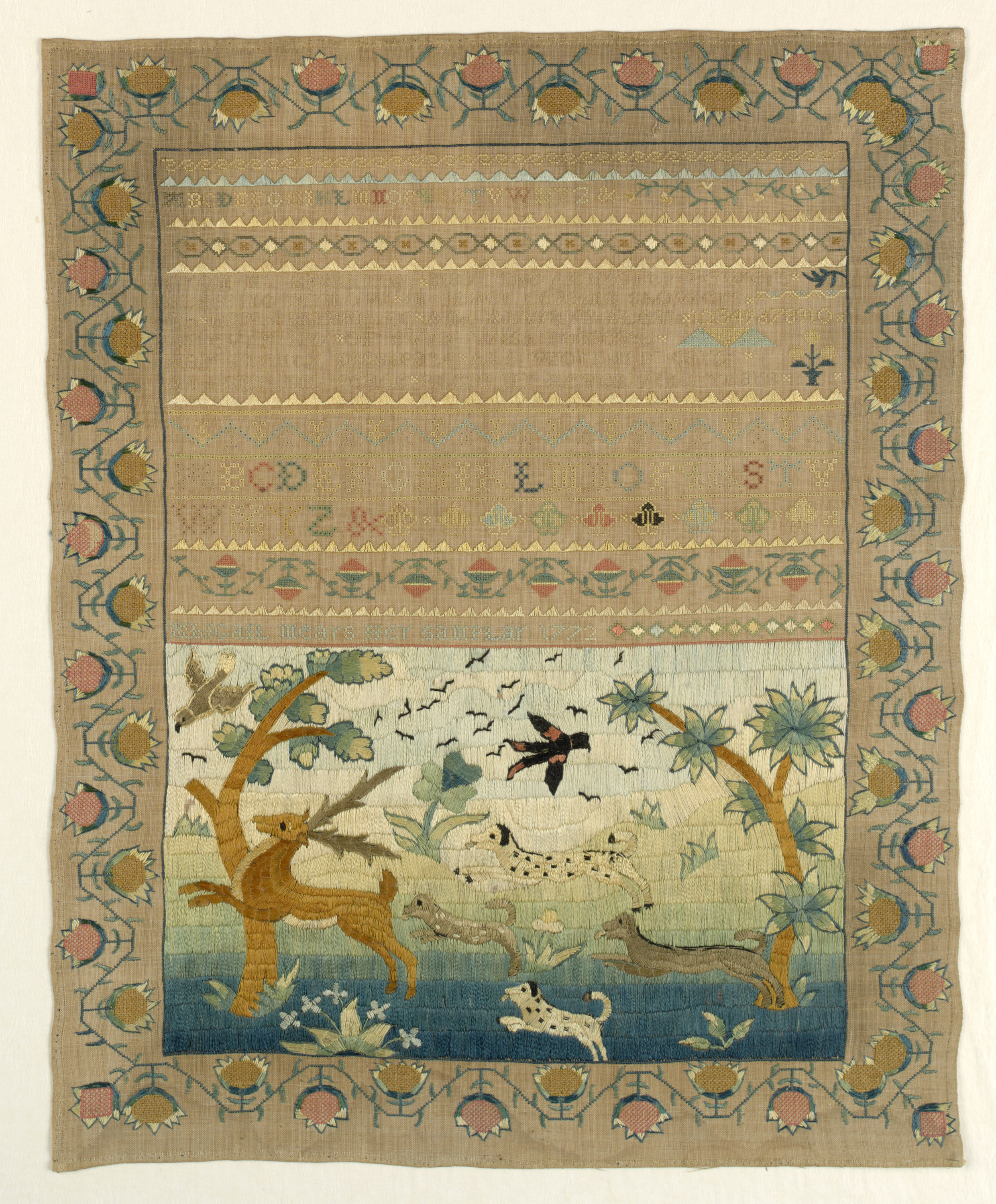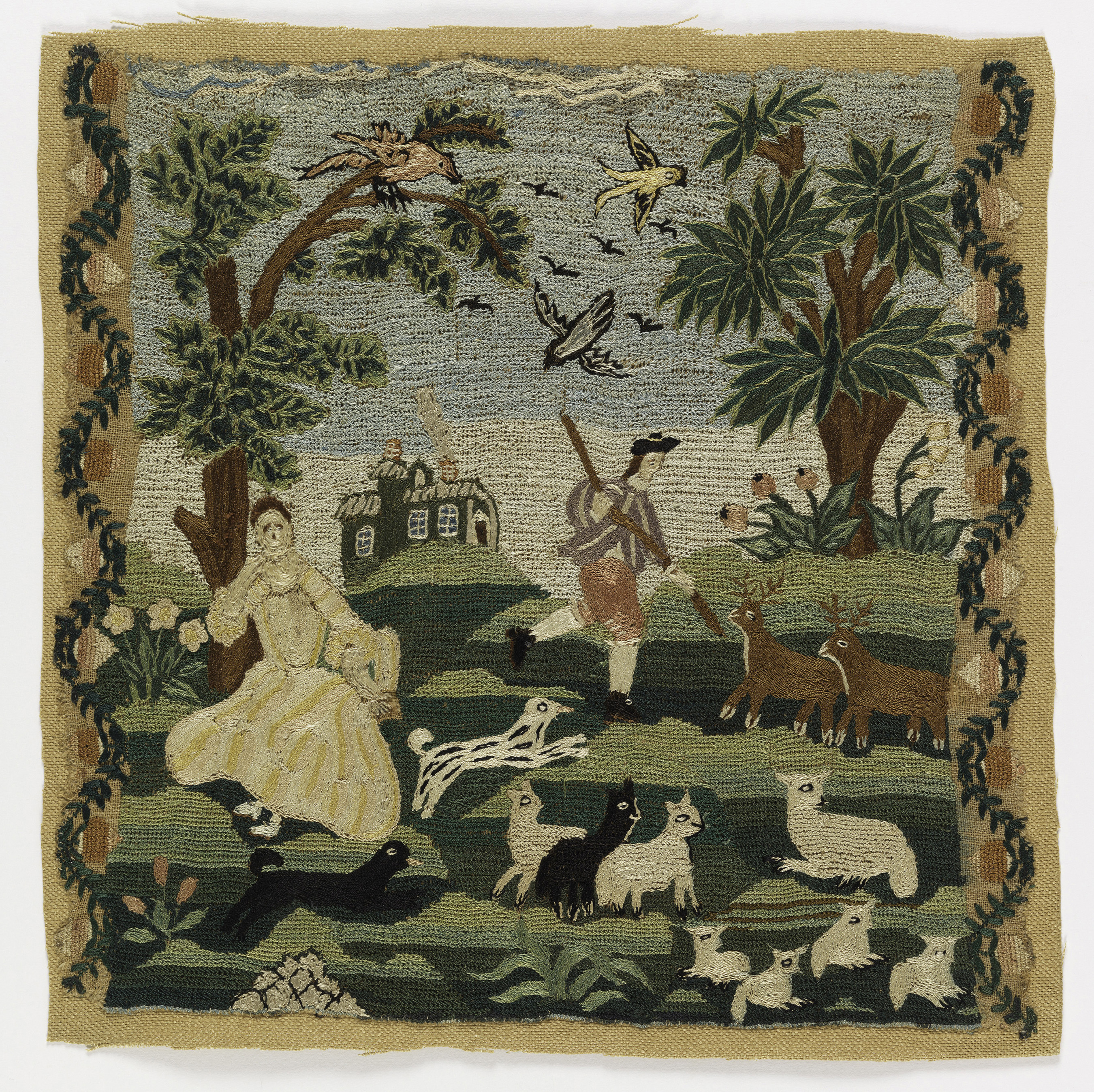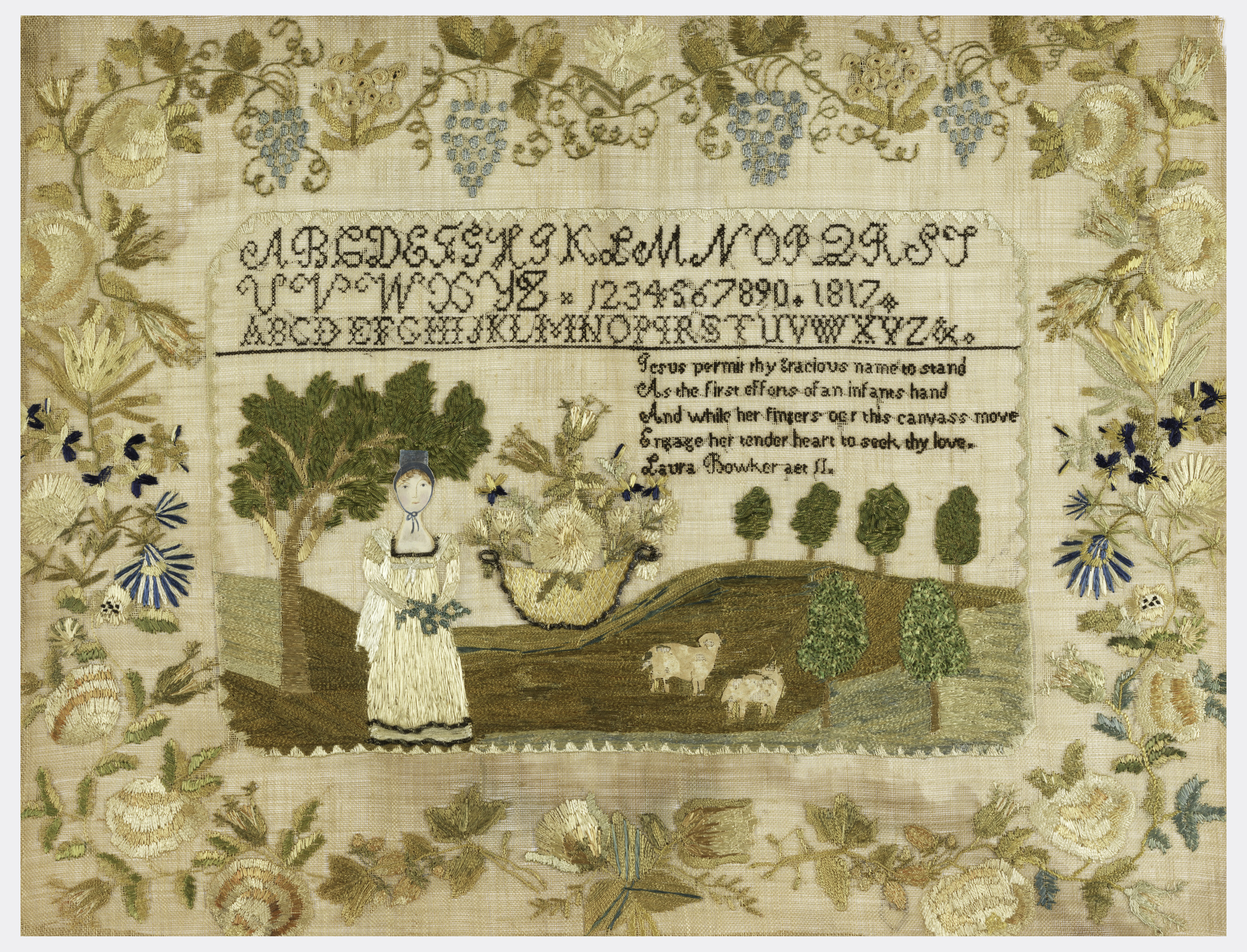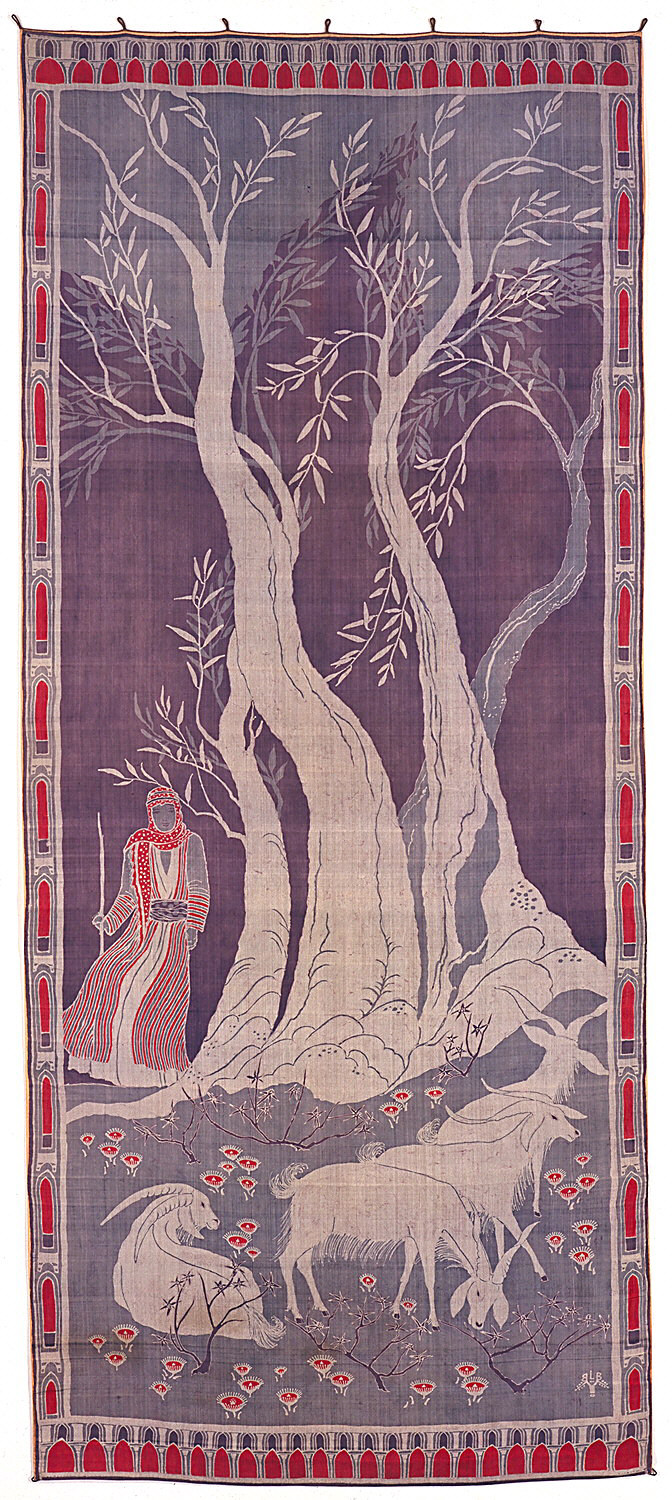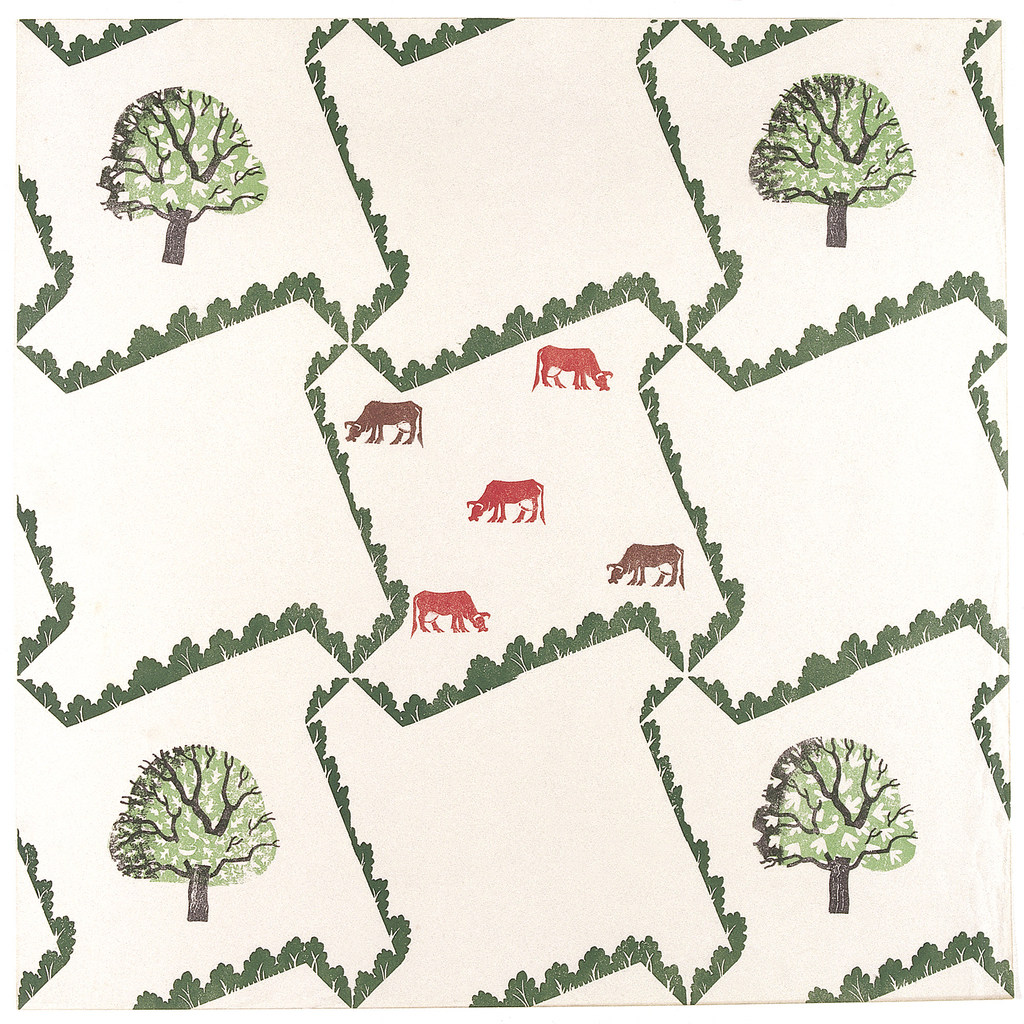This sampler was worked in 1812 by Mary Hamilton at the Maytown, Pennsylvania, school of Catherine Welshans (who became Catherine Welshans Buchanan after her 1813 marriage). The central scene depicts a woman, fashionably attired in a feathered headdress, standing beneath a tree. The border is made up of compartmentalized motifs, including baskets of flowers, flowering...
This sampler, worked by Abigail Mears in 1772, is related to a group of embroideries known as the “fishing lady pictures.” The name originally referred to Boston needlework featuring the same fishing lady, but now encompasses a variety of related pastoral compositions, with or without the fishing lady. From the 1760s, the same types of...
This anonymous embroidered picture was probably worked in Boston, where affluent seventeenth- and eighteenth-century New England families frequently sent their daughters to complete their educations. Popular in England during the first quarter of the eighteenth century, such needlework scenes first appeared in Boston in the early 1730s. This example is part of a group of...
This sampler, made by Laura Bowker (1805-1843), is part of a small group of pictorial samplers worked by girls from Fitzwilliam, New Hampshire. Each of the charming works features a woman standing in a pastoral setting with trees, rolling hills, a pair of lambs, and an oversized basket of flowers. These bonneted ladies hold bouquets...
Batik, or resist-dye, is an ancient craft often associated with Indonesia, but practiced in regions throughout Africa and Asia. It became popular in United States in the 1910s and 20s, with artists such as Arthur Crisp, Pieter Mijer, and Lydia Bush-Brown attracting national attention. These artists worked in the traditional manner, painting paraffin and beeswax...
Edward Bawden was a watercolorist, book illustrator, mural painter, and designer. He was inspired to design his first wallpaper after viewing the Daisy pattern by William Morris in an exhibition in 1925. Bawden’s preferred method of printing was the linoleum block at which he became quite adept. Harold Curwen, of the Curwen Press, saw some...
